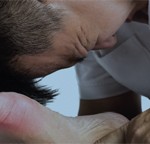A 55-year-old female patient returns to the office with complaints of gout pain. She is complaining of swelling and a burning pain in her left toe. She has been taking an over-the-counter NSAID to treat the pain, but this has done little to alleviate it. This is her second flare this year. The patient denies fevers, headaches, chest pain, dyspnea, cough, oral ulcers, rashes, hematochezia, insomnia or depression. The patient is a secretary at a law firm, is married and has two children, ages 18 and 21.
On examination, the patient is alert and oriented with normal vital signs. Her weight is 135 lbs., height 5 feet and 6 inches with a BMI of 21.8. Her lungs are clear. Her heart is RRR, with no murmurs or friction rubs. Her abdomen is soft, nontender, no mass or HSM. Her skin shows good color, and there is no turgor, no rashes. The musculoskeletal exam shows her gait is slightly stiff. The patient has warmth, swelling and irritability in her left foot. All of her other joints are unremarkable with FROM and no evidence of active synovitis.
Synovial fluid was drawn from the left toe hinge joint to be examined under a microscope. The examination shows needle-shaped intracellular and extracellular crystals. This indicates a diagnosis of acute gouty arthritis.
The patient was given a prescription for celecoxib and colchicine. Discussed diet and exercise with the patient and scheduled her to return to the office in four weeks.
How should this visit be coded?


